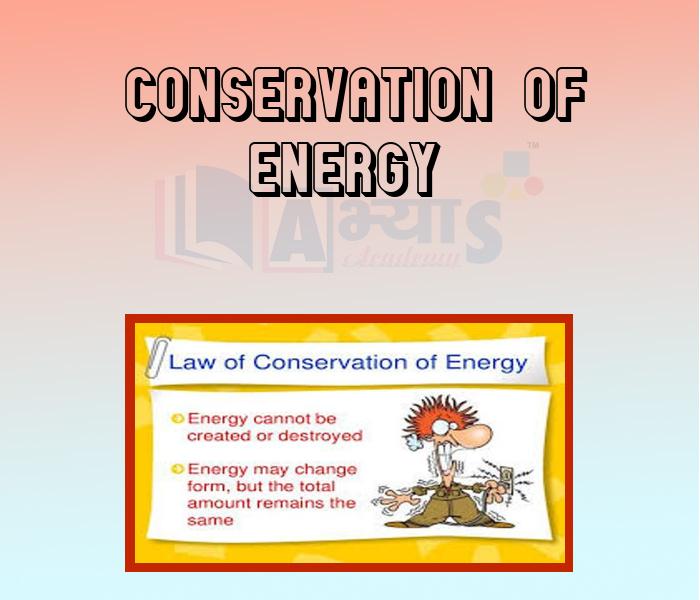Conservation of Energy











Conservation of Energy
Conservation of Energy
Energy can neither be created nor destroyed. It can only be changed from one form to another.
The above principle is called the principle of conservation of energy. It means that when all forms of energy are taken into account, the total energy in the universe remains constant. The principle is also valid for an isolated, i.e., one on which no force acts from outside.
Examples:
1. When a ball is dropped from a height, its gravitational potential energy decreases, since its height decreases. It may seem that energy has been lost. But the ball gains speed, and hence, it acquires kinetic energy. Actually, as the ball falls its potential energy is gradually converted into kinetic energy.
2. When we switch on an electric torch, the chemical energy stored in the batteries is converted into heat energy as the filament of the bulb gets heated. Heat energy is then converted into light energy.
3. When a person does work on an object, the energy of the object increases. As the total energy is constant, the person must lose the same amount of energy. That is why when we push a heavy box on a surface, we feel tired. We do work on the box, and hence, lose energy.
___________________ can only be changed from one form to another. | |||
| Right Option : D | |||
| View Explanation | |||
Which of the following are correct : (a) When a ball is dropped from a height, its gravitational potential energy decreases. (b) When a ball is dropped from a height, its gravitational potential energy increases. (c) When we switch on an electric torch, the chemical energy stored in the batteries is converted into heat energy. | |||
| Right Option : B | |||
| View Explanation | |||
Which of the following are correct : (a) Energy can neither be created nor destroyed. It can only be changed from one form to another. (b) When we switch on an electric torch, the chemical energy stored in the batteries is converted into heat energy. | |||
| Right Option : C | |||
| View Explanation | |||
Students / Parents Reviews [10]
A marvelous experience with Abhyas. I am glad to share that my ward has achieved more than enough at the Ambala ABHYAS centre. Years have passed on and more and more he has gained. May the centre flourish and develop day by day by the grace of God.

Archit Segal
7thIt was good as the experience because as we had come here we had been improved in a such envirnment created here.Extra is taught which is beneficial for future.

Eshan Arora
8thAbout Abhyas metholodology the teachers are very nice and hardworking toward students.The Centre Head Mrs Anu Sethi is also a brilliant teacher.Abhyas has taught me how to overcome problems and has always taken my doubts and suppoeted me.

Shreya Shrivastava
8thAbhyas Methodology is very good. It is based on according to student and each child manages accordingly to its properly. Methodology has improved the abilities of students to shine them in future.

Manish Kumar
10thI have spent a wonderful time in Abhyas academy. It has made my reasoning more apt, English more stronger and Maths an interesting subject for me. It has given me a habbit of self studying

Yatharthi Sharma
10thMy experience with Abhyas academy is very good. I did not think that my every subject coming here will be so strong. The main thing is that the online tests had made me learn here more things.

Hiya Gupta
8thOne of the best institutes to develope a child interest in studies.Provides SST and English knowledge also unlike other institutes. Teachers are co operative and friendly online tests andPPT develope practical knowledge also.

Aman Kumar Shrivastava
10thIt has a great methodology. Students here can get analysis to their test quickly.We can learn easily through PPTs and the testing methods are good. We know that where we have to practice

Barkha Arora
10thIt was a good experience with Abhyas Academy. I even faced problems in starting but slowly and steadily overcomed. Especially reasoning classes helped me a lot.

Cheshta
10thMy experience with Abhyas is very good. I have learnt many things here like vedic maths and reasoning also. Teachers here first take our doubts and then there are assignments to verify our weak points.
